Additional information
| Brand Name | LG |
|---|---|
| Item Weight | 54.7 pounds |
| Product Dimensions | 57.5 x 35.2 x 7.9 inches |
| Item model number | OLED65E6P |
| Batteries | 2 AAA batteries required. (included) |
| Is Discontinued By Manufacturer | No |
| Number of Component Outputs | Optical |
| Item display height | 36 inches |
| ASIN | B019O5F86W |
| Customer Reviews | /** Fix for UDP-1061. Average customer reviews has a small extra line on hover* https://omni-grok.amazon.com/xref/src/appgroup/websiteTemplates/retail/SoftlinesDetailPageAssets/udp-intl-lock/src/legacy.css?indexName=WebsiteTemplates#40*/.noUnderline a:hover {text-decoration: none;}4.3 out of 5 stars189 ratingsP.when('A', 'ready').execute(function(A) {A.declarative('acrLink-click-metrics', 'click', { "allowLinkDefault" : true }, function(event){if(window.ue) {ue.count("acrLinkClickCount", (ue.count("acrLinkClickCount"), 0) + 1);}});});P.when('A', 'cf').execute(function(A) {A.declarative('acrStarsLink-click-metrics', 'click', { "allowLinkDefault" : true }, function(event){if(window.ue) {ue.count("acrStarsLinkWithPopoverClickCount", (ue.count("acrStarsLinkWithPopoverClickCount"), 0) + 1);}});});4.3 out of 5 stars |
| Best Sellers Rank | #197,409 in Electronics (See Top 100 in Electronics)#39,453 in Televisions & Video Products |
| Date First Available | January 5, 2016 |
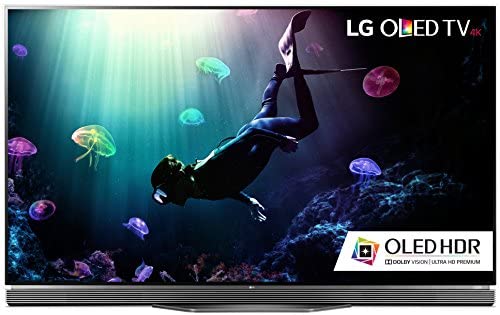
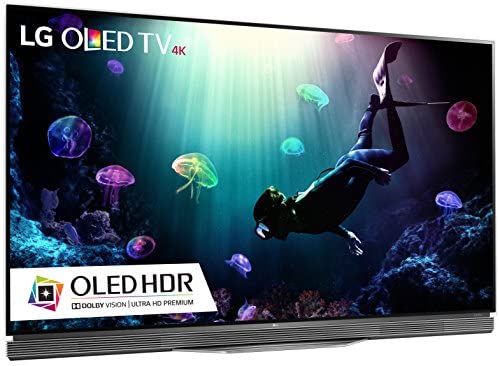
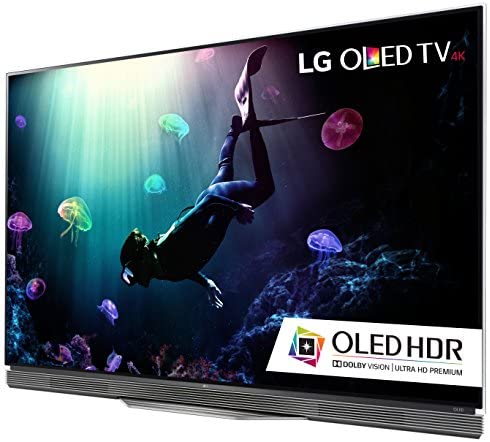
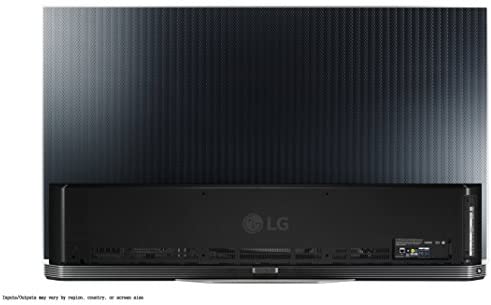
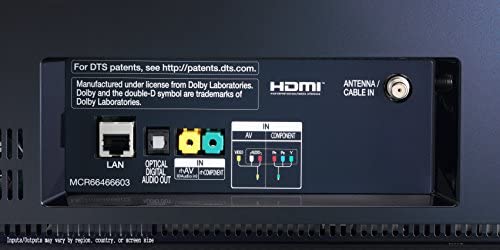
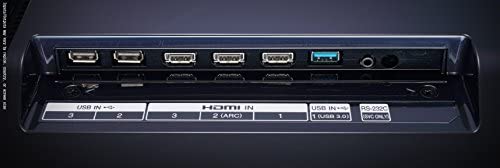

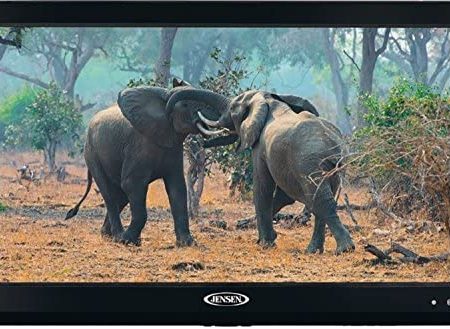

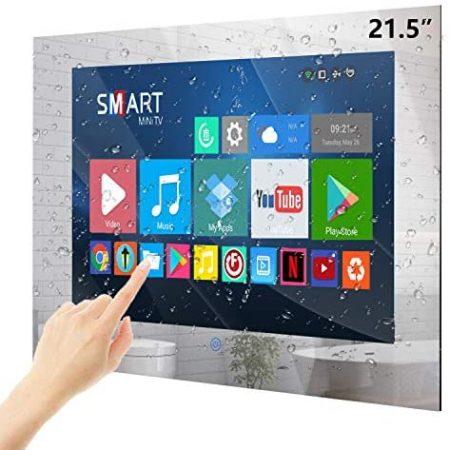
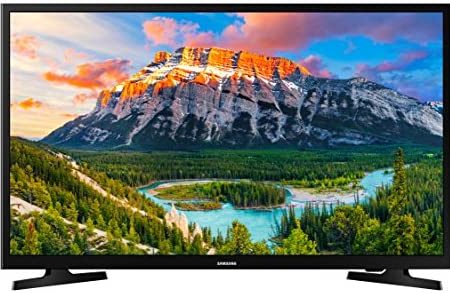
Brian Mackyol –
The picture quality is amazing at 65″. It was easy to put up, but it takes 2 people to do so.The user interface is easy to use and works great.I use this with an xbox one s for 4K blue-ray movies and gaming. The 4k movies look fantastic! 3D works great with no issues. The TV comes with 2 passive 3D glasses, but you can also use the same glasses from movie theaters you probably have accidentally took home.I do not notice an issue with input lag while playing games on my xbox one, including 1st person shooters, although I have not tried any HDR enabled games. The price is high but, I highly recommend this TV
JB –
That’s right… Samsung has already pulled out. And it is reported that both LG and Sony will not introduce 3D TVs in 2017. So if you are into 3D Blu Ray movies, buy this TV RIGHT NOW. This TV is absolutely the pinnacle of the experience. I find the dissentergration of the 3D format very, very sad. And LG, by far, has (or had) the best execution.
Nadav Vansover –
It was between the LG OLED 65″, and the Samsung “QLED” 75″ (since the LG 77″ was over the budget).Very happy about the choice.Pros:- Picture quality is amazing. Oh, those blacks are so deep…- WebOS was a very nice surprise. Responsive, easy updates to the trendy apps and very cool “media lookup” quickly helps navigate movie choices to the apps that actually have them. Neat.- VERY elegant living room presence – the thin appearance of the black glass, contrasted with the gray/horizontal lines of the soundbar, make this TV look very modern.- Availability of a slim mount made installation easy and helped get rid of the stand. Makes the TV look even more elegant and slim.- Nice surprise to see the TV easily accepting HID devices (Logitech keyboard in my case) through a USB port.Cons (nothing is perfect, yet this TV still deserves 5 starts. I sometimes want to get home early just to watch a movie…):- Settings are “all over the place” – there are many parameters to control (which is good and I like) – but finding them quickly is sometimes tedious.- TruMotion seems to always “enable itself” and doesn’t stay off. TruMotion may be liked by some, but it makes cinema material look as if it was shot with a home camera. Some, like myself, like to turn TruMotion off (possible) and KEEP it off (not sure if this is possible…)- The WebOS browser will not play “exotic” video formats (i.e. Castup). Hoping this can be solved in future updates.
Alex Cruz –
“I seriously did not know it was even possible to get an image this good from a television”, my neighbor upon me giving him a demo of this beast.My 3d Movie collection has become brand new, I find it hard to describe how much better the image is when you are getting two full, 1080p, OLED quality images in your brain at the same time. Just phenomenal. Saw Moana 3d last night… jaw dropping.I’ve only watched 4k UHD content from YouTube and Vudu, and it’s astounding,. I’ve yet to hook it up to a true 4k UHD blu-ray, I hear Revenant is something else.But yes, if you love 3d, this is the best tv in the world. hurry before they run out!
Mayra S. –
Update 01/20/17- It is official, I finally purchased an Oled65E6p! As expected, completely gorgeous TV which excels at everything I throw at it. Few observations now as an owner: 1) I’ve noticed no issues with blurays being up converted on this TV, and as a 3D fan, I am EXTREMELY happy with the turn out of 3D compared to my 2012 LG LED. There is an Auto setting with 3D on these models which I assume change settings scene by scene, eliminating some of the ghosting I had on my previous model. Avengers 2, Civil War, Jungle Book all look amazing in 3D on this TV. 2) I’ve bought a few 4K HDR movies during black Friday and tried a few on my Xbox S. To be honest, I feel that most of the bluray versions of the 4k movies I bought look about the same, I have a hard time distinguishing between the two unless I pay close attention. Though not all 4k movies are HDR (and I will definitely not replace all my blurays to 4k), there are select 4k HDR movies that just seem perfect for OLEDs. For instance, movies such as Mad Max Fury Road and The Martian with a wide range of colors really stand out on this TV. I noticed on Mad Max the improved resolution with 4k, but it wasn’t until I saw explosions and lightning (the dessert storm chase scene) that I was truly impressed with the TV’s HDR capabilities. Basically, pick and choose your 4k HDR movies since not all really take advantage of the TV’s abilities. 3) I had a hard time getting my Xbox to “recognize” my TV as HDR capable. I tried different HDMI cables, restarted the TV and Xbox, and was still not able to play 4k discs. I finally realized that you need to go into settings under General (not picture settings), and turn ON HDMI ULTRA HD DEEP COLOR for whichever HDMI ports have a 4k capable device connected. This solved my issue with playing 4k discs and getting my XBOX to recognize my TV as HDR. 4) The plastic brackets holding the TV to the stand break pretty easily. I can see a hard rocking motion or an earthquake cause the TV to break away from the stand. Not a problem since I mounted the TV but an observation to earthquaks proof your TV if possible. 5) I will be writing a review on the 2017 Oled models (which look fantastic), and though they do have improved HDR features, wider color gamut, and improved peak brightness, unlike 2015 to 2016 where 2016 signature Oleds were clearly superior, 2016 models are a great choice even after seeing the 2017 models.ORIGINAL REVIEWAs a big follower of OLED technology for several years now, I was almost 100% sure that I was going to buy the EF9500, which I almost did during the Holiday season of 2015. But like any electronic, the most important question to ask is “will it worth it to just wait until next year?”. This question kept me curious to wait until CES 2016 just to see if LG had anything really worthy up their sleeves. Turned out that LG did have something worthwhile to show to the electronic world with the new 2016 signature line of OLED TVs. Although nothing would make me happier than having a 65″ OLED of my own right now, patience for the right TV has kept me from making an $10,000 investment in Oled a few years ago when the technology was just taking baby steps. Patience is also what’s going to get me a great deal on the 65E6P this holiday season. Along with the rest of the 2016 signature Oleds (G6, E6, B6, C6 all share the same video processor and specs), this Oled is THE TV you’ve been waiting for, and if you were on the fence on just buying an older model for a steep discount, allow me to explain why I feel its worth the wait to buy a 2016 Oled instead.I have looked into specs for both the 2016 and the 2015 lineup, and it all boils down to one simple question. For the price (above $2,999), am I getting a TV that is future proof? When the EF9500 was released, no one can deny that it wasn’t amazing to look at. Compared to the EG9600, it got rid of the curved screen, and it included all three HDMI 2.0a & HDCP2.2 ports that would allow for UHD HDR content through HDMI (not just apps) which made me feel like it was future proofed at the time. Then the price dropped from $6,999 to $5,999, to $4,999, (I’ve even seen the 65EG9600 for $3500 on Ebay as a daily deal) so I was tempted to buy and came close. So why should you wait to buy the E6 instead? Simply put, the Oled technology in the EF9500 (also EG9600) will not be able to keep up with UHD players and UHD content hitting the market in the coming years in terms of ability, and in terms of the level of maturity in the OLED technology itself.To further elaborate on the subject, as another reviewer for the G6 2016 Oled did, I’d like to refer to a great article from tvevaluate.com with did have some great comparisons between the 2015 (EF9500,EG9600) and 2016 lineup (G6, E6, B6, C6) to help explain what the EF9500 can’t do well.1) The 2016 Oled lineup features ColorPrime Pro technology allowing them to display 99% of the DCI-P3 expanded range of colors for better true to cinema visuals. The EF9500 and EG9600 models only cover less than 90% of DCI-P3 which affects their abilities to truly recreate cinema type visuals and colors. Blacks are still on par and similar on all models.2) The 2016 Signature models meet the criteria for “Ultra HD Premium” which requires at least a 540 nits peak brightness and less than 0.0005 nits black level. On the other hand on some calibration tests the EF9500 and EG9600 could be pushed to the upper 370 nit level range, but still not on par with the 2016 Lineup. Brightness levels may not come close to some 2015-2016 TV models from other reputable brands such as Sony and Samsung which can reach close to 1000 Nits or even more. However, LG’s Oled’s ability to decrease black levels in individual pixels to virtually off levels while displaying rich and vibrant color images creates enough of an image contrast to create superb HDR images and video. Athough HDR was added by a firmware upgrade on the EF9500 and EG9600 models, the increase in brightness in the 2016 signature lineup and wider DCI-P3 color range of 99% changes HDR and UHD video on an LG OLED from a Gimmick, to a industry competitor.3) Speaking of HDR and keeping up with future standards, one of the reasons I held out on OLEDs each year was the eventual introduction of HDMI 2.0a & HDCP2.2. Originally, 4K content was possible with the older HDMI 1.4 but only at 24-30fps. HDMI 2.0 then came out and has become a standard on all 4K TV’s which allowed 4k content to be played seamlessly at 50-60fps. Then out of nowhere, this thing called HDMI 2.0a and HDCP2.2 becomes a standard, and older (and still very decent) 4K TV’s became outdated. What is HDMI 2.0a? It’s the ability for UHD content to display content in HDR. HDCP2.2 is the copy prevention technology standard moving forward to prevent illegal copying of 4k content. If your TV doesn’t have HDCP2.2 embedded into it’s connection, (even if it had the ability to) your content will not play to its full potential. As stated before, through a firmware update the 2015 EG9600 was able to play HDR content but only through the third party applications like Amazon, Netflix, Hulu, etc. The HDMI ports were all 2.0 and not HDCP 2.2 which meant future UHD players with the ability to play content in HDR would not work through HDMI. The EF9500 came out later in the year and actually included all three HDMI 2.0a/HDCP 2.2 ports. The 2016 Lineup includes a total of 3 (up to 4 on the higher model) HDMI ports all of which are HDMI 2.0a and HDCP 2.2 compliant. The difference with the 2016 models is that they don’t just display HDR, they execute it well. Simply having the HDMI port doesn’t mean anything is the design and ability of the TV can’t showcase the content however. This is where the E6 and all the other 2016 OLEDs impress. The combination of the 2016 Signature lineup’s increased brightness and color range, creates a new level of vibrancy and authenticity to UHD video content. These improved capabilities have also made the 2016 signature lineup compliant with HDR (High Dynamic Range), HDR10 (2015 EF/EG are not compliant), and Dolby Vision formats (2015 EF/EG are not compliant). These are all important standards of UHD that Netflix, Amazon, and Movie Studios are incorporating into movies and TV shows that are available now, and in the future. Gizmondo wrote a great article on the comparison and extremely improved visuals of Netflix’s Daredevil with HDR (Dolby Vision to be exact) on a 2016 Oled when compared to the 4k TV he already had, which just means I’m going to rewatch both seasons when I do get the TV :-)Between the comparison of 2015 and the 2016 lineup, and keeping in mind the progress made in the last few years to elevate 4K content and UHD content, I realized that a shift was made in the entertainment industry from not only focusing on acquiring a higher resolution (4K), but to display video content to near flawless levels. The goal being to bring you elevated visuals straight from the imagination of movie makers, directors, etc. in a manner that balances fluidity, contrast, and color. This is where HDR comes in. And why is HDR so important? Because HDR is like a composer that pushes every visual component of your TV to play gorgeous and fluid visuals. It brings out light where it needs it, pushes black where it should be, and coordinates the color spectrum in an image with an end result that can be described as “balanced, natural, and life-like”. The future of TV is not just about the higher resolution, but about what’s behind that resolution. The downfall with the EF9500 (and the EG9600 for that matter) is that what it visually displays, it does it well, but where it matters in regards to UHD HDR, HDR10, and Dolby Vision, “well” won’t cut it in the near future. With an improved color range/spectrum and brightness levels the 65E6 can really make UHD HDR content justice. For those still on the fence on whether or not to go 2016, I suggest finding an in store display 65G6 from one of the available locations on LG’s website (I went to a Best Buy in Los Angeles) and see the comparison for yourself. To me, there was NOTICEABLE difference in color and brightness when compared to the 2015 models, and if the content is HDR capable the distinctions were even larger.For the Price, the 65E6 is my choice between the 2016 Oled Lineup. Its Flat like the B6 ($5,999) model, but like the higher end G6 ($7,999) it has the “Sceen on Glass” look for credit card thin profile. Unlike the G6 model, you do lose the Harmon soundbar/Wall mount combo, and lose one HDMI port, but I already have a soundbar so I’d rather save the $1,000. Starting at $6,999, this is the price that the EF/EG 65 inch models started off at last year. As Black Friday approaches, I’m counting on the same discount, and am planning on getting this TV at the $4,999 price range. FYI pictures are from the instore G6 65 in model from bestbuy, but the E6 looks similar minus the soundbar, and you can see the screen on glass look I’m talking about.This year, LG was able to break the standard of what a home OLED TV can really do. I am choosing the 65E6 OLED TV for my household because for the price, you’re not just paying for a TV that looks good, you want a TV that hits a homerun for everything. Because in that case, there are plenty of television larger than 65″ and cheaper than $3,000 that can make current Bluray HD content look “good to great”. But unlike the transition from DVD to Bluray, Bluray to UHD standards now go above simply reaching a desired resolution and are now focusing on how that content is being visually displayed. Every 4K television before 2015 attempted a guess at what the future of TV would hold, but very few were future-proofed for what is yet to come in the next five years. So take it from someone who has been price checking and following Oleds for years, the 2016 LG OLED lineup successfully achieves the perfect balance between, OLED maturity, technological ability, and price that I and many others have long been waiting for. So if the price hasn’t stopped you and you want the very best, look no further than the 2016 OLED lineup.UPDATE 04/13/16- I have recently come across a CNET article which goes over HDR10 and Dolby Vision HDR more in depth, and I want to share some information for those on the fence of buying a new TV of any brand in the next coming months. When the signature line was announced, LG stated that their 2016 Oled Signature line was both HDR10 and Dolby Vision capable, this I thought had more to do with capability rather than actual hardware. As the CNET article explained, VIZIO and LG are the only major TV brands at this time to support both HDR10 and Dolby Vision HDR on their newer TV’s (Vizio will add HDR10 through a firmware update). HOWEVER, Samsung and Sony have pledged support for only HDR10. Unlike HDR10 which can be downloaded through a firmware update, Dolby Vision is only capable in TV’s that have their Dolby Vision Chip imbedded inside the processor of the TV. Which means that is your TV isn’t Dolby Vision capable from the beginning, it won’t ever be. At this time, all 4k HDR Blurays are HDR10 and all UHD 4K Players are also HDR10, with neither supporting Dolby Vision at this time. However, most of the Dolby Vision content is coming from online streaming from Netflix, Hulu, Amazon, and Vudu to name a few. As the CNET article also explains, Dolby Vision and HDR10 act differently on how the video content will be displayed in HDR, with some studios, directors, and producers showing a preference for Dolby Vision for some content, and HDR10 for other content. From what Netflix and Amazon have explained, shows that are HDR capable may be available in either HDR format which means that your TV or the streaming service will choose whichever HDR format looks best on your TV, or whichever they are only capable of. If a show was made in Dolby Vision and not in HDR 10 however, you’re out of luck if its not an LG or Vizio. From what the Article explained HDR10 is open format which means more user friendly, but the HDR settings are static and don’t change throughout the Movie/TV show whereas Dolby Vision might take some more time to work with, but it has the ability to adjust HDR from frame to frame which sounds great. Dolby Vision is also heavily backed by Google if that means something. Either way, HDR10 and Dolby Vision are just becoming known by most people, but it’s important for those on the fence for either an LG, Vizio, Samsung, Sony, or other to understand what their TV is, or isn’t actually capable of before buying.
R. Chambers –
First the good or I should say amazing and that is the picture the pure blacks are simply amazing, the 3d will stun you and it is better than my Panasonic plasma. I moved the plasma to the bedroom and replaced it with this model. Like the plasma you can view it from any angle and the clarity is second to none anyone saying other wise doesn’t know what they are talking aboutNow the Bad. They tv just does not integrate like the 2012 Panasonic plasma the plasma could pick up any device connected and control any of them my Sony DVD player volume and all controls, my Pioneer receiver all worked flawlessly together enabling me to control all of them with my Panasonic remote. Sadly the LG does not I have to juggle three remotes when watching a movie. I am still trying to work it out with the new Denon 4k receiver i have not yet replaced the dvd with a 4k yet but it will be next purchase, Odd when the plasma was made there was no arc hdmi yet it controlled all the devices.I have had to purchase an optical cable to get the sound to work from the TV to the receiver I am amiss to figure out whats the point of high end hdmi cables and LG that wont allow return sound. One more thing the base is not very substantial and the TV will waver if touched. All in all I still give the tv 5 stars for its picture quality alone.
AKR1 –
I carefully researched 65” TVs and concluded OLED was the way to go. There is practically only one manufacturer LG that is currently selling these. The 2017 models were not available for display and were significantly more expensive. After reviewing the B6 and the E6 side by side with an LG rep that happened to be at my local Best Buy, despite the fact that I did not need the soundbar in the E6, I concluded the picture and picture on glass design was worth the extra $500. The remote was also better looking than the B6 remote.Now after having watched it at home for a few days I can verify it’s a fantastic panel. Watching it in a very bright room with sunlight streaming in was no problem- something that originally concerned me about OLED. And the blacks in a suitably darkened room are exceptional.Overall the best TV for the money on the market. The LG rep told me the 7 series (2017) are even better but I could not see one. What is a fact however is you will pay at least 2k more for it this year.Criticism: the positioning of the HDMI and other plugs is inexplicably on the side rather than below that makes cables difficult to conceal especially thicker ones for longer runs.Also the LG app ( at least for IOS) is useless. They need a new app asap. But the magic remote is great.
J. Treworgy –
The picture quality is ridiculously good. That’s it, period, I’ve never seen better.If you’re into 3D television, there’s nothing better either, and since LG doesn’t make 3D TV’s any more, this is the best it will ever be until some new tech is invented. Full HD passive 3D, excellent brightness, almost no ghosting ever. The one thing to be aware of for 3D is that the vertical position is important. If you mount this high on a wall, it won’t work. You need to be more or less at the same height for good 3D. But I assume if you’re looking at this TV, you’re already a videophile and wouldn’t have it any other way anyway, right? Horizontal position range is great, too.Hint: set custom TruMotion settings unless you want a weird and often janky video experience. The defaul tru-motion settings make most movies look like a soap opera, and animated films get severly distorted. And if watching 3D with those settings active, it’s even worse, all kinds of crazy digital noise.Just set “de-judder” to 0 and “de-blur” to 10, and forget about it, and you’ll be fine.
Christopher Cardinal –
This TV is not cheap, and I did not take this purchase lightly. Every professional review I read about the new line of LG OLED TVs has called them “the best TVs ever made,” yet I was still skeptical. I was prepared to send this right back if I wasn’t blown away by it.The reviewers are right: This really is the best TV ever made. I’m a miserable, hyper-critical excuse for a person, yet I’ve yet to find an aspect of this TV that isn’t measurably better than all others I’ve seen — and I looked at every other TV from the major manufacturers this year.The on-screen help guides you through everything, so even the most non-techie users won’t miss out on all the advanced features this TV has to offer.My best advice for new users: If some movies / TV shows don’t “feel” right, don’t worry — this is easily fixable. The default display settings apply several powerful filters that sharpen and clarify the image. While these filters really show off the high resolution of the TV and make it look great with showroom demo material, they shouldn’t be used for everything at home.These filters make the image look ultra-realistic — like you’re right there in the scene — which is great for sports, for example, but they can make some TV shows and especially movies feel wrong because it alters the depth of field and movement rate away from what our eyes and brains expect. For example, watch The Lord of the Rings with these filters on and some scenes will look like a low-budget student film.To fix this, go to: Settings > Picture > Picture Mode SettingsHere, reduce the Sharpness value. (Reduce it more if you will be sitting close to the TV, less if you will be farther away.)Then go to: Settings > Picture > Picture Mode Settings > Picture Options:Here, adjust the following: – Set TruMotion to Off – Lower the Noise Reduction and/or MPEG Noise Reduction if people look like they are unrealistically smoothAltering these settings will only apply to the current input mode, which is great – so you can make Netflix look great while still using the advanced filters while watching live sports without having to fiddle with the settings each time.My _one_ complaint so far (which won’t affect many people): The TV doesn’t support the Plex app yet, which is important to me. Samsung and Vizio TVs support it, as does every Roku/AppleTV/Chromecast/fireTV-type device. From what I have read, LG took a years to approve the Plex app for the webOS 1 family, and this new line is 3.0. I don’t know what’s taking them so long.Thanks for reading. In ~20 years of using Amazon, this is the first review I’ve written.
Bizzle –
Initial thoughts:Pros:-because the TV is so thin, it is suited for wall mounting (i have not done so but it is aesthetically an art piece)- not a power hungry TV-The OLED display is beautiful. TV critics complain about the screen not having enough “nits” (brightness), but, unless you are a truly discerning videophile I have found the brightness to be more than adequate. Given the absolute black level, you really notice a contrast in a scene where the TV transitions from a dark scene to a light scene.-The TV does wonders with HD video and really shines with 4K/UDH inputs. Watching UHD for the first time is like watching HD for the first time after standard def.CONS:-the HDMI input placement on the back of the TV is poor (see picture); you will need some twist ties to ensure that you don’t see an HDMI cord poke out behind the tv-every now and then there is some “banding at the edge of the screen” but, this effect is really only noticeable within 3 feet of the TV. Hopeful that this will be fixed with a firmware update in the near future.-the attached sound bar is meh (weak on bass), but likely sufficient for casual viewers Will edit in a few months, but I have not noticed any “judder” that some customers have complained about. HD looks pretty good on the E6 but the TV truly shines when you give it 4K or HDR input. While there is not a lot of 4K/HDR currently available, this TV covers HDR10 and Dolby Vision, so it is “future proof.” HDR10 and Dolby Vision are color standards having a HD-DVD/ Blu ray battle, and the winner will end up becoming the standard. Because this TV is compatible with both, the winner will not matter.Conclusion:-the newer E7 just came out so now is a time to look for a deal on an E6